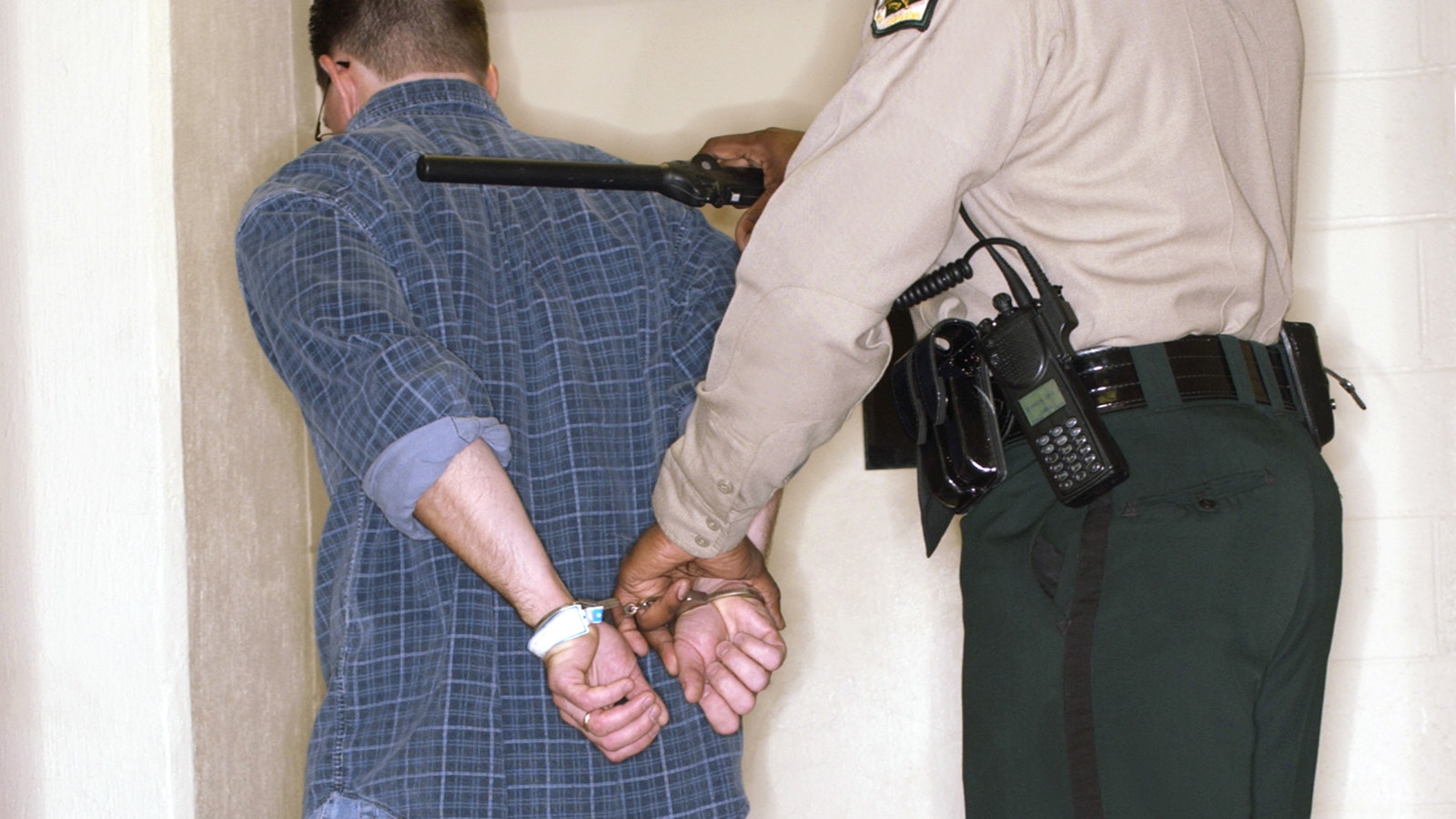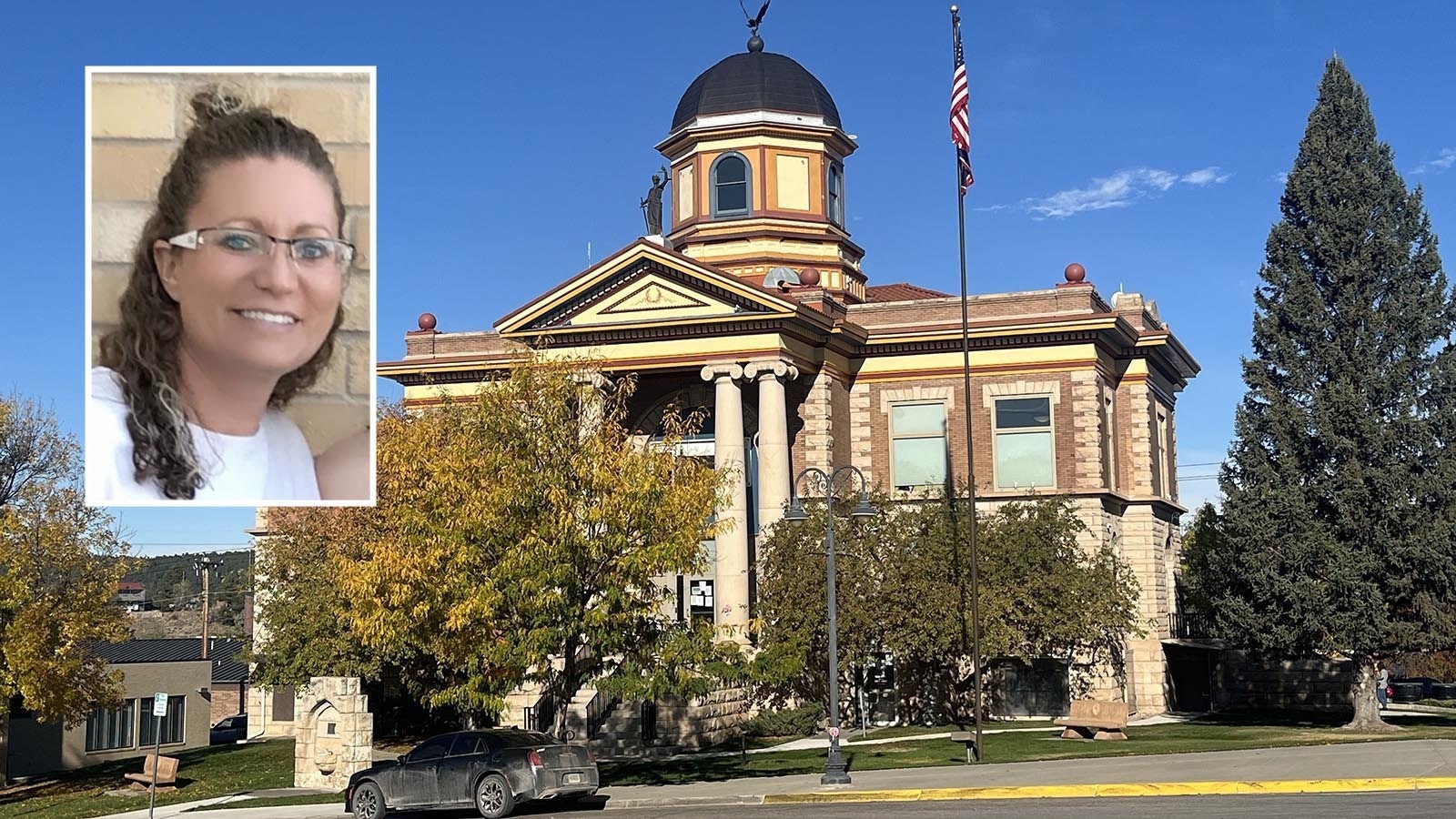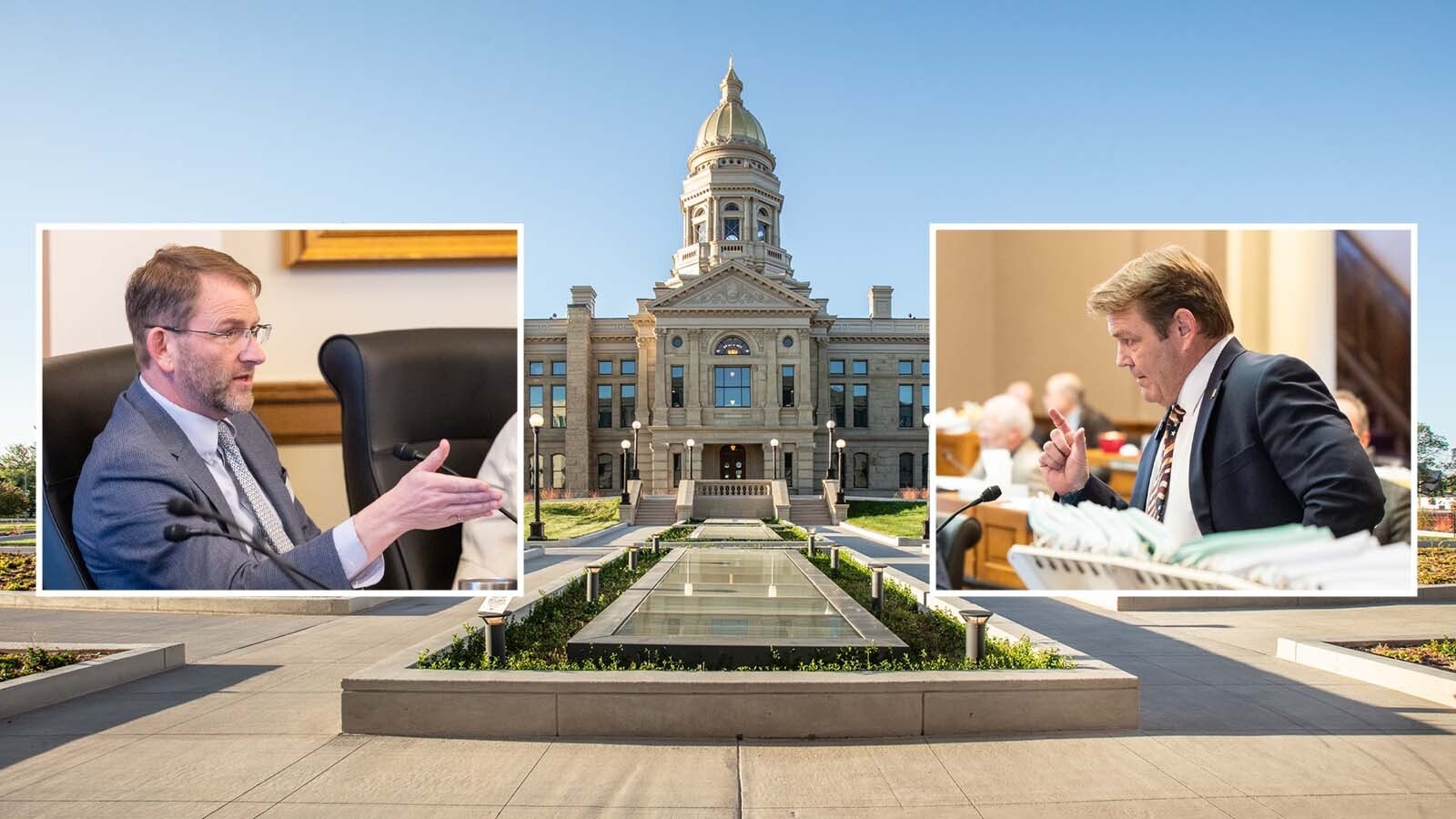Wyoming Supreme Court Justice John Fenn said judges around the state are facing increasing physical threats from defendants and need more protection.
He told state lawmakers this past week that there were about 40 courtroom incidents and off-site confrontations in Wyoming circuit and district courtrooms last year, a “dramatic increase” from years past. He believes this disturbing trend to be an outgrowth of post-COVID-19 pandemic societal discontent.
One way judges can be made more safe is to keep their personal contact information private instead of public, Fenn said.
Many of Wyoming’s circuit and district court judges work long hours, arriving and departing in largely empty, dark parking lots, he told the Joint Judiciary Committee during its three-day meeting in Sheridan.
When he was a district court judge, Fenn said he was confronted in a parking lot, but luckily a sheriff’s deputy rushed in to assist him from nearby. On another occasion he had litigants show up on his doorstep on a Sunday morning.
He said many other judges throughout Wyoming share similar experiences, with some female judges also reporting threats of sexual violence.
Beyond The Courtroom
Fenn said there has been rampant turnover in security staffing in Wyoming’s judiciary branch and local sheriff’s offices that also provide a security presence in the courtrooms. Although some judges have made requests for more security, Fenn said the Supreme Court has been unable to provide it.
“The presence of law enforcement in the courthouse and courtroom is just paramount to protection and order,” he said.
Courtroom security around Wyoming varies greatly.
In Natrona and Laramie counties, strong security measures are in place with entry through metal detectors required. In other places around the state like Goshen and Park counties, there is less protection.
“In some cases, it’s almost nonexistent,” said former Wyoming Attorney General Gay Woodhouse.
Former Cody district court judge Steve Cranfill said he traveled to 12 county courthouses during his time on job, finding each to have a different level of security. He finds it unrealistic there can be a “one-size-fits-all” solution for the security problem.
In Wyoming, members of the general public are not allowed to bring firearms into a courtroom, but if no metal detector is being used to screen entrants, that law can be ineffective. Judges, on the other hand, are allowed to bring a firearm to the bench.
Fenn said the Supreme Court wants judges carrying arms to go through official training before bringing them into a courtroom.
COVID Effects
Many court hearings went virtual and remote during the pandemic, with some hearings still allowing remote attendance as an option.
Public threats and hazards were established in Wyoming long before COVID. In 1977, an Evanston attorney’s home was bombed leading to two deaths, and in 2014, a Sheridan man was found guilty of fire bombing his county attorney’s office. In 1986 and 1993 there were school shootings in Cokeville and Sheridan.
Although retired, Cranfill served as a substitute judge for Park County Drug Treatment Court a few times during the height of the pandemic, finding the experience of running a courtroom via Zoom to be an “awkward” experience he doesn’t find to be right.
Many improvements were made to courtrooms around Wyoming as a result of COVID-19 related federal money, but these investments were more related to courtroom technology and virus-blocking plexiglass.
Judges’ Experiences
Cranfill said although there are many exposed and vulnerable spots for judges inside the Park County Courthouse because of the many entrances to the facility, he said certain areas of the courthouse became more restrictive during his time as judge from 2006-2017.
He said the worst experience of intimidation he ever had during his 11 years on the bench was having someone throw a wad of paper at him.
“I always felt safe and secure,” he said. “The Park County Sheriff’s Office deputies were always there. I never felt threatened at all.”
He also received some fairly rude letters from people he had sentenced to prison, but those same people apologized after being released, thanking him for incarcerating them.
Former Wyoming Supreme Court Judge Marilyn Kite said Judge Wes Roberts, who recently retired from presiding over the Fremont County Circuit Court, experienced several incidents, including a bullet shot into the wall of the old court facility. A new facility was constructed in 2015.
Next week, a circuit court judge from Texas who was shot in her driveway, will speak to some of Wyoming’s circuit and district court judges.
Challenge With Prosecuting
It’s a felony in Wyoming to threaten, influence or intimidate a juror, witness or officer, but Fenn said this charge is rarely prosecuted and should be clarified to specifically include judges.
He mentioned an instance where a Natrona County judge was threatened by a mentally ill person who was never charged for the act.
State Rep. Ember Oakley, R-Riverton, who’s also a prosecuting attorney, finds this law more focused on juror intimidation and suggested adding language that includes “harassment” and “judicial officer.”
“It seems to me that we could add to this or create a new statute that is directly on point,” she said.
Rep. Ken Chestek, D-Laramie, warned that the more specific a law is made, the more narrow its application will be.
“I’m a little concerned if we start to try and predict every possible officer who might be considered to be an officer, we're going to exclude somebody,” he said.
Rep. Mark Jennings, R-Sheridan, expressed worry about creating a special class of citizens for conflicts taking place outside of the courtroom.
“Where do we stop? Do we protect judges but we don’t protect legislators? Pretty soon do we protect all the teachers?” Jennings said. “What life is more important than the other? And we want them all to be protected, but there’s only so much.”
Cranfill said he sees both sides of this argument.
“I think it ought to be clarified that it’s not appropriate to threaten a judge, but if they start there, where are you going to end it?” he questioned.
Other Vulnerabilities And Solutions
Fenn cited having the flexibility to offer additional security for particularly controversial cases and training judges themselves on security measures as possible solutions.
He said the accessible nature of Wyoming’s small-town culture is both a blessing and a curse, creating tight knit communities often only an arm’s reach away, even in a courtroom setting.
Fenn hopes there will also be some future consideration to reimbursing expenses to judges who invest money in home security systems.
He mentioned how judges homes can be found on a county assessor’s website in a manner of minutes by simply searching their names. Fenn said this information can usually be taken off an assessor’s website, but must be provided if requested in person at their office.
“It’s pretty hard not to know where we live,” Cranfill said.
Cranfill said some judges have requested that the term “judge” not be used on mail sent to them from the state, saying some judges feel that this “invaded their sanctuary.”





